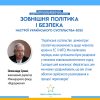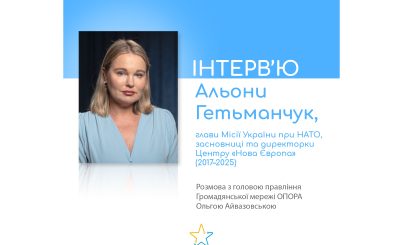This document is prepared as an addition to analytical infographic “Security matrix of Ukraine. From commitments to guarantees“
The US President Joe Biden has every chance to go down in history as the president with the most powerful legacy in Ukraine’s track, if Ukraine will be invited to join NATO during his term. That would indeed also mean correcting the mistakes from former Democrat administrations that contributed to Ukraine’s denuclearization – such as during the Clinton administration, when Ukraine gave up its nuclear capabilities; and the Obama-Biden administration, when Ukraine gave up the last of its highly enriched uranium stockpiles.
Formally, despite widespread perception, there is no protocol with a list of specific criteria for any Euro-Atlantic country to be invited into NATO. Article 10 of the founding Washington Treaty generally states: “The Parties may, by unanimous agreement, invite any other European State in a position to further the principles of this Treaty and to contribute to the security of the North Atlantic area to accede to this Treaty.”
Even more indicative is Article 7 of the NATO Enlargement Study, which was supposed to “clarify” Washington Treaty articles in terms of enlargement and which is, in fact, the basis of NATO enlargement policy since 1995, clearly states: “There is no fixed or rigid list of criteria for inviting new member states to join the Alliance. Enlargement will be decided on a case-by-case basis”. Accordingly, Ukraine’s implementation of the reforms list for an invitation (and not membership) is a sign of Ukraine’s goodwill and its commitment to the idea of being invited to join the Alliance.
The event of Ukraine’s invitation would be truly unique in the history of NATO enlargement, being an invitation to a country in the midst of a hot stage of war with a constantly shifting frontline.
What are the possible formats of Ukraine’s invitation to NATO today, during active phase of war? And what are the requirements for the most favorable invitation regarding Ukraine’s security?
-
Invitation as solely political declaration
Such an invitation has more of a political and psychological meaning, without the concept of security guarantees in the foreseeable future.
Pros: From a political standpoint, it is a signal that as the war continues, Putin is in fact drifting away from his stated goals (Ukraine’s neutral status), rather than getting closer to them. From a psychological point of view, it will have a great effect on the morale of Ukraine’s military and society in general, helping Ukrainians understand that there either will be no next Russian aggression at all, or if there is, Ukraine will not be alone next time.
Cons: Lack of security guarantees for the indefinite future. Potential “withdrawal” of invitation in case Donald Trump is elected president.
2. Invitation + accession negotiations
Despite the common belief that an invitation is equal to actual accession to NATO, the Alliance has a defined accession procedure that consists of three stages: invitation, accession talks and ratification of protocols. Usually, accession negotiations are more of a formal step (in the cases of Finland and Sweden they lasted one day), but given the existing issues about Ukraine’s readiness for NATO membership, the ongoing war and in the context of security and defence sector reforms, Ukraine can use this procedure to fulfil the conditionalities in terms of reforms in exchange for an invitation and the start of accession procedures (following the 7-step algorithm of the EU candidacy process).
Pros: Ukraine will receive not only an invitation, but also begin the accession procedure.
Cons: Risk of an artificial delay and creating more preconditions for the start of the ratification process.
3. Invitation + temporary security guarantees from nuclear countries
This is defined as a formal invitation to NATO. Given that the time phase from invitation to the moment of full membership is the most vulnerable, it is important to reinforce such an invitation with political declarations of bilateral security guarantees from countries with nuclear arsenal, as was the case with Finland and Sweden.
Pros: Invitation with elements of security guarantees before full membership.
Cons: The complexity of concluding such bilateral agreements by the nuclear countries themselves.
4. Invitation + adapted enhanced Forward Presence (launch of the “Coalition of resolute”)
While in the cases of Finland and Sweden, a political (non-binding) declaration on security guarantees was sufficient as a similar stage between invitation and membership. In the case of Ukraine, with an ongoing active phase of the war, it would be more appropriate to involve the military component of individual states that have the appropriate political will and capabilities. In the Baltic States and Central Europe, NATO membership was followed by the deployment of the enhanced Forward Presence. In the case of Ukraine, however, it could be the other way round: eFP preceding NATO membership.
Pros: Using of collective security elements even before achieving full Alliance membership. The fact that NATO has prior experience of such a mechanism in the Baltic States and in Central European countries.
Cons: Despite said prior experience, this would require complex diplomatic and bureaucratic work in the Coalition of resolute countries.
5. Invitation + gradual accession (amendments to Article 6 of the Washington Treaty)
This is an option that can be implemented before the full liberation of all occupied territories of Ukraine. We emphasize that this is a gradual, not partial accession: that is, an invitation to the entirety of Ukraine within its internationally recognized borders, the accession to be followed gradually by Article 5 coverage, as Ukrainian lands are liberated (not to be confused with partial accession, which would imply a de facto renunciation of the occupied territories). However, this option at least presupposes a clear administrative line. It may also be necessary to amend Article 6 of the Washington Treaty to clarify the geographical coordinates of Article 5, which has already been done twice in NATO’s history (it happened with Turkey’s membership in 1951 and Algeria’s loss of status as a French colony in 1962).
Pros: Liberating the entirety of Ukraine will not be required for full membership.
Cons: The model will only be possible with a truce / temporary ceasefire. Diplomatic complications linked to amending Article 6.
Conclusions:
Looking at the possible options, we see these 3 requirements to invitation as necessary and preferred.
First, a necessary requirement for the invitation is to extend it to the whole of Ukraine within internationally recognized borders.
Second, a key requirement is to define an algorithm for the accession process, even at the stage of a temporary ceasefire (gradual accession). It is worth considering the possibility of amending Article 6 of the Washington Treaty, which defines the geographical area of application of Article 5.
Third, a requirement will be the parallel development of temporary security guarantees until the moment of full membership, and with possible involvement of military component if not at the level of NATO then at least at the level of a Coalition of resolute: a group of countries (with the mandatory presence of nuclear countries) that are ready to send their military to Ukraine. In this context, we should consider reproducing the NATO model of enhanced Forward Presence (eFP): the deployment and training of troops on a rotational basis and at the level of Coalition of resolute, and, not necessarily NATO.







